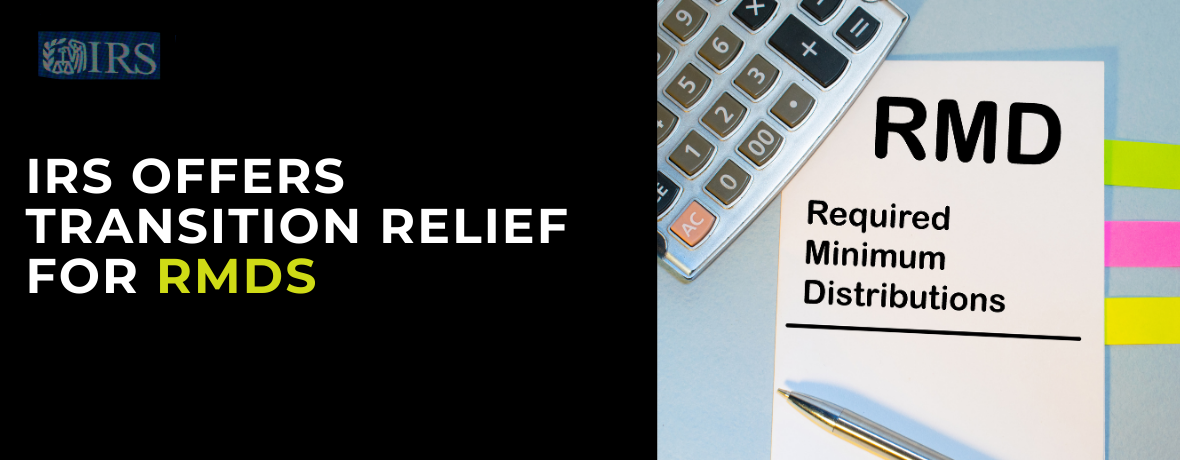
NABT Subchapter V Q&A
AMERICAN BANKRUPTCY TRUSTEE JOURNAL- WINTER 2022
An interview with Charles N. Persing, CPA/CFF, CVA, CIRA, CFE, Partner, Insolvency & Litigation at Bederson, LLP and a Region 3 Subchapter V Trustee by Region 9, Eastern District of Michigan Subchapter V Trustee Kimberly Ross Clayson.
ABTJ: Thanks for being here today Chuck, can you tell us a little about your background?
CP: I started my career as an auditor, then got a job with a client in the radio business, where I became CFO, and then went to the telecommunication business with the company, Winstar. And if you know anything about bank ruptcy, Winstar was a pretty famous case, that resulted in a published Third Circuit decision which was very exciting. We were able to get a creditor to be deemed to be an insider so we were able to expand the preference claw-back period. That was my entree into bankruptcy. After that, I began working with trustees and in insolvency, I started with one Chapter 7 trustee in 2000 and now I have probably about 30 trustee clients.
ABTJ: Do you have any fun facts about your background?
CP: When I was in the radio business I did some work with Dick Clark. I happened to even get the chance to spend the night at his home. Some people who know me very well have to ask if I was allowed to or if I had to sneak in. But I was allowed to, so that was pretty cool.
ABTJ: So, what do you do when you are working for trustees?
CP: I do all my work in asset 7s, we do tax returns, we help with the preferences and I kind of fancy myself as someone that’s able to sell assets. I pretty much serve as financial advisor for everything the trustees need to do.
ABTJ: That sounds like a lot of forensic work, is that what you are doing?
CP: What I do is prepare a written report for the trustee – I will go in and look at the books for two years back and I note unusual transactions, issues with the financial statements, issues with the tax returns, talk about insiders and talk about possible preferences. I look out for abnormal things that we see that are happening in the books and records.
One of my cases involved the IRS and FBI who uncovered a $2 billion fraud scheme that put the business in to bankruptcy. We reversed all the fraudulent journal entries and got a couple million dollar’s worth of tax refund and got the cash.
ABTJ: In the context of your work in Subchapter V, coming from your financial background , what are the types of things that you would suggest that Subchapter V trustees especially those of us trustees who do not have the same financial expertise? For instance, what types of red flags would do you look for to determine if a broader investigation is warranted?
CP: Right away, I want to look to the tax returns to see what normal looks like for the business, in the small businesses we deal with they generally run on QuickBooks. So, I want to look at the QuickBooks and see if it compares in any way.
ABTJ: When do you get involved in a Sub V case?
CP: I start every Sub V case from the moment I get the email from the UST requesting the conflict check. I have a one on one conversation with the attorney. I typically ask the attorney “where do you feel this case is going, what are the issues. “I remind them that I’m a CPA before examiner and all that stuff. I really want to know the issues up front so I do not to spend the debtor’s money trying to find issues.
After that conversation, I arrange a conversation with the debtor and the attorney and I start asking questions. At the same time, I tell them what to expect. What the IDI is like, what the 341is like; the timetables. As you know, it’s all new to a lot of people, and you’ll get lawyers that think 90 days is a long time. But if the attorney doesn’t have an idea of what that plan looks like by time we get to the status conference, the attorney is in trouble. So, I emphasize the timetable and what they have to do to get the plan done.
ABTJ: What do you think attorneys need to do to prepare their clients for Subchapter V?
CP: I took on a case where the last year’s tax returns weren’t done and the debtor was under payroll audits and stuff like that. So, the first thing I would do as an attorney is hire an accountant before the case gets filed. If time permits, the debtor needs to give the accountant the ability to start getting things in order. It often takes a month or two months for the tax returns to get done. And that’s a problem for me as a CPA Sub V trustee . It’s a problem for the UST. The tax return is your roadmap to help with the plan.
ABTJ: What should us Subchapter V trustees consider when looking at the projections to determine if the debtor is proposing a plan that meets the 1191 requirements?
CP: One thing some of the debtors and their attorneys don’t realize is that physics is physics . So, if your margin is always been 42%, it’s not going to be 54% overnight. So, you have to look at the past, no matter how shabbily the records were prepared to kind of give you a guide to what the projections are going to look like. If there is a big change from the financials to the plan, why does the debtor think they’re going to go up 6% a year, when they’ve been declining for the last five years? What’s different about the organization now?
If the debtor’s S, G and A2 went from $3 million to now $2 million, why did it drop to $2 million and why will that lower level of S G and A, be able to support, almost the same amount of sales? There has to be some rationale behind that and that’s the biggest difficulty that I have with looking at the projections is finding a link from what was done in the past to what the plan projects. For example, maybe the debtor went from renting 40,000, square feet, and moved into a 10,000 square foot facility and the sales have gone down so that instead of 30 people, 15 people can handle it.
The projections cover the ceiling, but the floor is important too, the floor is the liquidation analysis. I find that many people leave stuff out of the liquidation analysis. For example, intellectual property is often left out. I think that leaves the debtor open to criticism from the creditors. I would put intellectual property in, put an amount in, even if it’s a deminimis amount or put zero and the debtor should explain why it is zero.
The liquidation analysis should even consider taxes, because in a Chapter 7 sometimes the trustee has to pay taxes, such as when a building has greatly appreciated that creates an ordinary income event. The equity on a cash basis, may not be enough to pay the equity and pay the taxes on it so that’s one of the things that I even do for one of my 7 cases.
ABTJ: Would you say you are you seeing debtors over projecting disposable income, and over projecting liquidation value?
CP: Not on purpose but there’s also a tendency of the debtor to say, I can pay this stuff back, and I’m going to get more. So, I want to make sure all the safeguards are in the projections and liquidation analysis.
ABTJ: How do you see your role in helping debtors who have tough decisions ahead of them in their business?
CP: It depends on the debtor, and how forceful they are. If there is any sign they are willing to take advice, and I think the attorney is right, I’ll reinforce the attorney.
In the salon case I am working on in particular, the debtor made a number of changes, some on their own initiative and some based on me talking about areas of the balance sheet or the P & L. I’ll say, “this is a little high, what can we do here, what can we do there?” Then there’s some cases where the debtor knows exactly what they were going to do and they made those changes.
ABTJ: How do you handle tough conversations with creditors?
CP: It’s simple, if a secured creditor does not support the plan, the case is either going to get dismissed and they’re going to spend money in state court, getting their liens enforced and whatnot, or it goes to a 7, and the creditor is going to get maybe a little more than the liquidation value maybe a little less depending.
ABTJ: Tell me about one of the most interesting matters you have been involved in?
CP: When I was in a federal receivership for the first recycling company I handled, the shareholders were brothers who were not getting along. It was a two and a half billion dollar business at one point in time. They were handling catalytic converters, and then there is platinum palladium rhodium and all that stuff. I found the nephew who was at work in the business. And we clicked. I had an inventory value when I started of $48 million retail. There’s a lot of dust in this business the products have to be hammered and there’s all this crinkled metal. I put my hand in the debris and lifted it up. I thought, “there’s money floating in this dust.”
ABTJ: Are you talking about Platinum metal?
CP: Platinum, palladium and rhodium. We were sending some of this stuff out. And the buyer was sampling it by putting in a thieve . It’s a little rod and it takes a sample and pulls it up. But I called it a thief , because on the bottom of the barrel was dust that you couldn’t get out, and that’s where all the value was.
So in that dust we ended up getting three to 5% of the body of the weight in power powder, which is worth the money. And you put it into a smelter and it becomes a metal.
ABTJ: That’s amazing.
CP: I say it’s like a broken watch you’re right twice a day so say something 24 hours a day, and you’ll get it right.
ABTJ: Thank you for your time today.
CP: Thank you.
ENDNOTES:
1 This interview was paraphrased from an audio transcript.
2 Selling, general and administrative expense
About the Author
Kimberly Ross Clayson, Partner, Jaffe Raitt Heuer & Weiss. Kim Clayson is a Subchapter V Trustee in the Eastern District of Michigan. She has practiced bankruptcy and insolvency law for over 15 years. Kim has expertise in small business restructuring and representing Chapter 7 trustees and creditors in investigating
financial affairs. Kim recently joined the insolvency group at Jaffe Raitt Heuer & Weiss where she will continue to serve as Subchapter V Trustee and represent its clients in creditors’ rights matters.
continue reading
Related Posts
Ed Bond and Matt Schwartz named AIRA 2022 Distinguished Fellows




